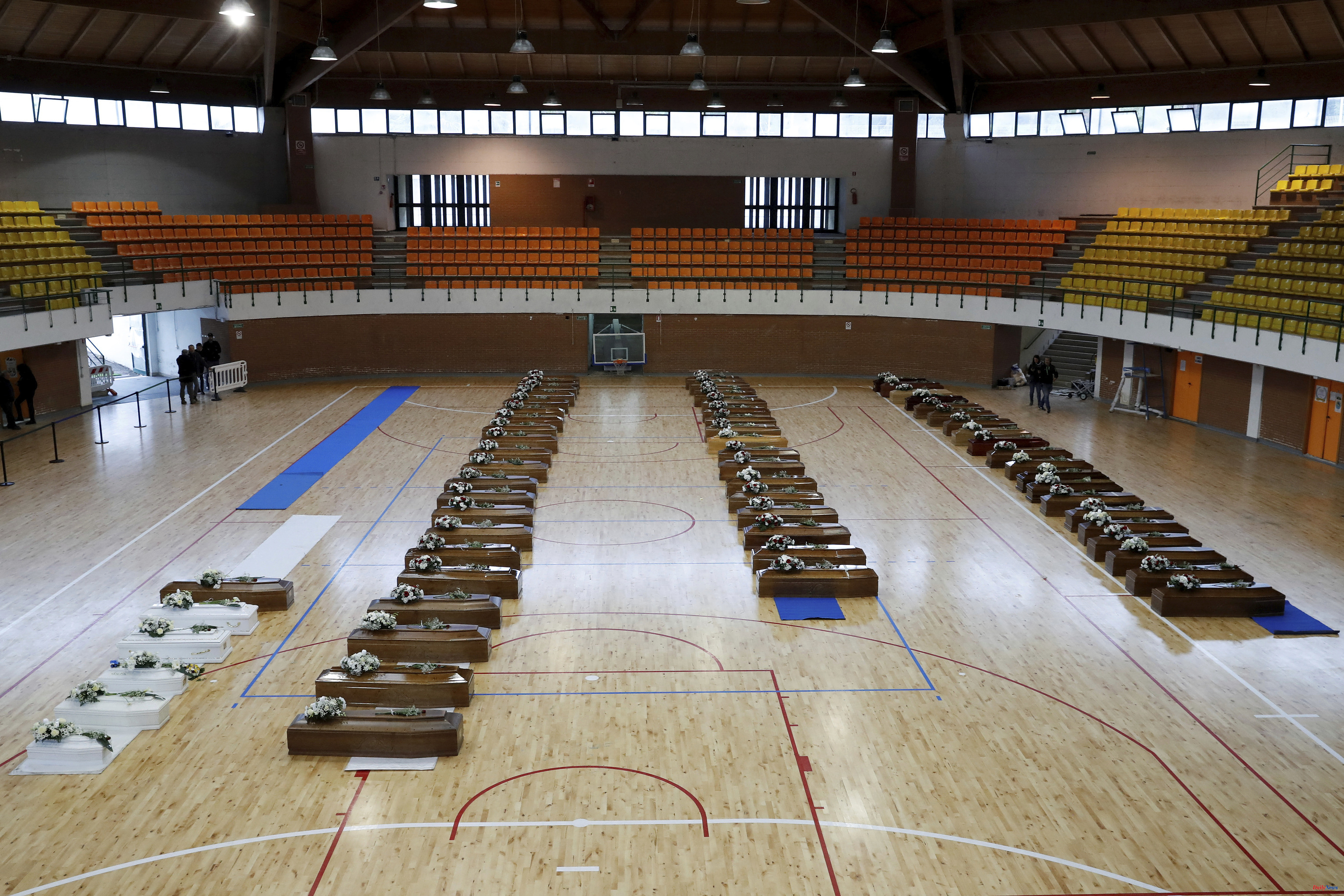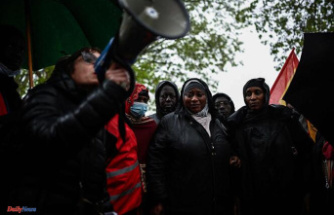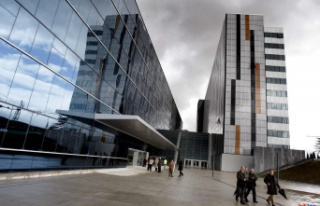The number of victims of the shipwreck of immigrants last Sunday in Steccato di Cutro, in the Crotone area, is increasing. Last night, the rescue teams have found the body of a man on the beach of Steccato. This is the 64th victim of the tragedy and so far only 23 bodies have been identified. The search continues today.
In the meantime, all the coffins have been taken to the Crotone sports hall, where the funeral chapel will open. There are many who have already come to bring flowers and messages of condolence. On some coffins there is a plate with the name and surname; in others, only the initials. What impresses the most are the tiny white coffins, which house the bodies of deceased children. Flowers have been placed on top of each one.
Meanwhile, the reports are beginning to reveal the testimonies given to the authorities by the survivors and the investigators, which have allowed the identification of the three alleged traffickers accused of having driven the boat from Turkey to Italy, despite the prohibitive conditions of the sea. They are a Turkish citizen and two Pakistanis, suspected of having asked each migrant for about eight thousand euros for the trip of death.
This is how the story of a Syrian picked up by the carabinieri begins: "I left Syria in 2015 to arrive in Turkey, where I lived for eight years. Through Facebook I contacted a certain Abo Naser, a Palestinian I met through a friend who organized this trip. After leaving, after a few hours the boat broke down and the staff and crew sent a second boat in which we boarded," he says, although there is still no certainty about this detail.
The man, who also provides a description of one of the boatmen arrested yesterday, recounts that the second boat arrived with four people on board and was driven by a Turk and a Syrian: "I remember that the Syrian was robust and was also a mechanic. There was also another Turk who had a tattoo on his right cheekbone and who didn't steer but gave orders to the whole ship. He seemed like some kind of boss to me because he gave orders to the others. Then there were two Pakistanis, one who was the one who directed transfer from Izmir to the first ship".
Another testimony narrates the last and agitated moments before the tragedy: "About four hours before the ship sank, one of the two Pakistanis went down to the hold and told us that after three hours we would reach our destination. An hour appeared before the accident and told us to get our luggage and get ready to disembark, we were almost there. Suddenly the engine started smoking, there was a lot of smoke and a smell of burning oil. People in the hold started suffocating. I was able to grab my nephew and climb on deck, after which the ship broke apart and water began to enter. When I got on there were still about 120 people in the hold, including women and children."
At this point, the investigators asked the survivor what the boatmen did: 'I saw that the Syrian and the two Turks inflated a boat and fled. I didn't see what the Turk with the tattoo on his cheekbone did, I was just thinking about saving my nephew". In addition to the 64 victims, including about twenty children, there are still dozens of missing people.
What happened in the interval between 10:30 p.m. and 4:10 a.m. on Sunday? Could the immigrants aboard the "Summer Love", the name of the boat, have been saved? This is what the Crotone Prosecutor's Office, which is investigating the shipwreck, is trying to understand. At the moment there are three criminal hypotheses: manslaughter, shipwreck and complicity with illegal immigration.
At 10:30 p.m. on Saturday the 25th, a Frontex plane, the European Border and Coast Guard Agency, reports the presence of a vessel 40 miles off the coast of Crotone and gives the coordinates. It also reports that there is a Turkish mobile phone on board. It is, therefore, a migrant boat. Shortly after midnight, two vehicles belonging to the Guardia d'Finanza from Crotone and the Barabrese patrol boat from Taranto leave. But the sea is too rough and the patrol boats return. Their boats are not intended for rescue, but for "interception", which is why they are not properly equipped. Around two in the morning, a new attempt to reach the ship, also in vain. For their part, the coast guard patrol boats remain in the port.
There is an interval of about six hours, between 10:30 p.m. on Saturday and 4:10 a.m. the following morning, Sunday, February 26. It is then that a call to 112 from an international mobile phone reports a shipwreck a hundred meters from the coast of Steccato di Cutro (Crotone). In that call, agitated voices are heard asking for help from the sinking boat. The Carabinieri of the Crotone Operational and Radiomobile Unit, led by Lieutenant Andrea Stallone, immediately arrived at the indicated area, jumped into the water and managed to save five migrants. But for many others it is already too late.
Requests for information on victims and survivors of the shipwreck are coming in from all over Europe at Crotone Police Headquarters. They are relatives, relatives, friends of the victims who know or suppose that one of their loved ones was on the boat and they ask for news about his fate. An Afghan woman residing in Germany, fearing the presence of her 15-year-old cousin and not knowing how to contact the authorities, went to the Berlin newsroom of Ansa, sending a photo of the boy and a description of him.
According to the criteria of The Trust Project












